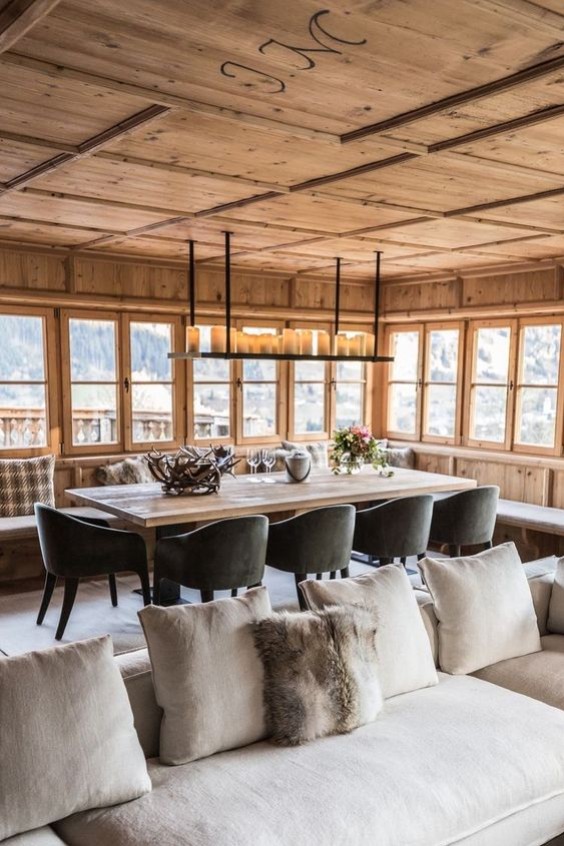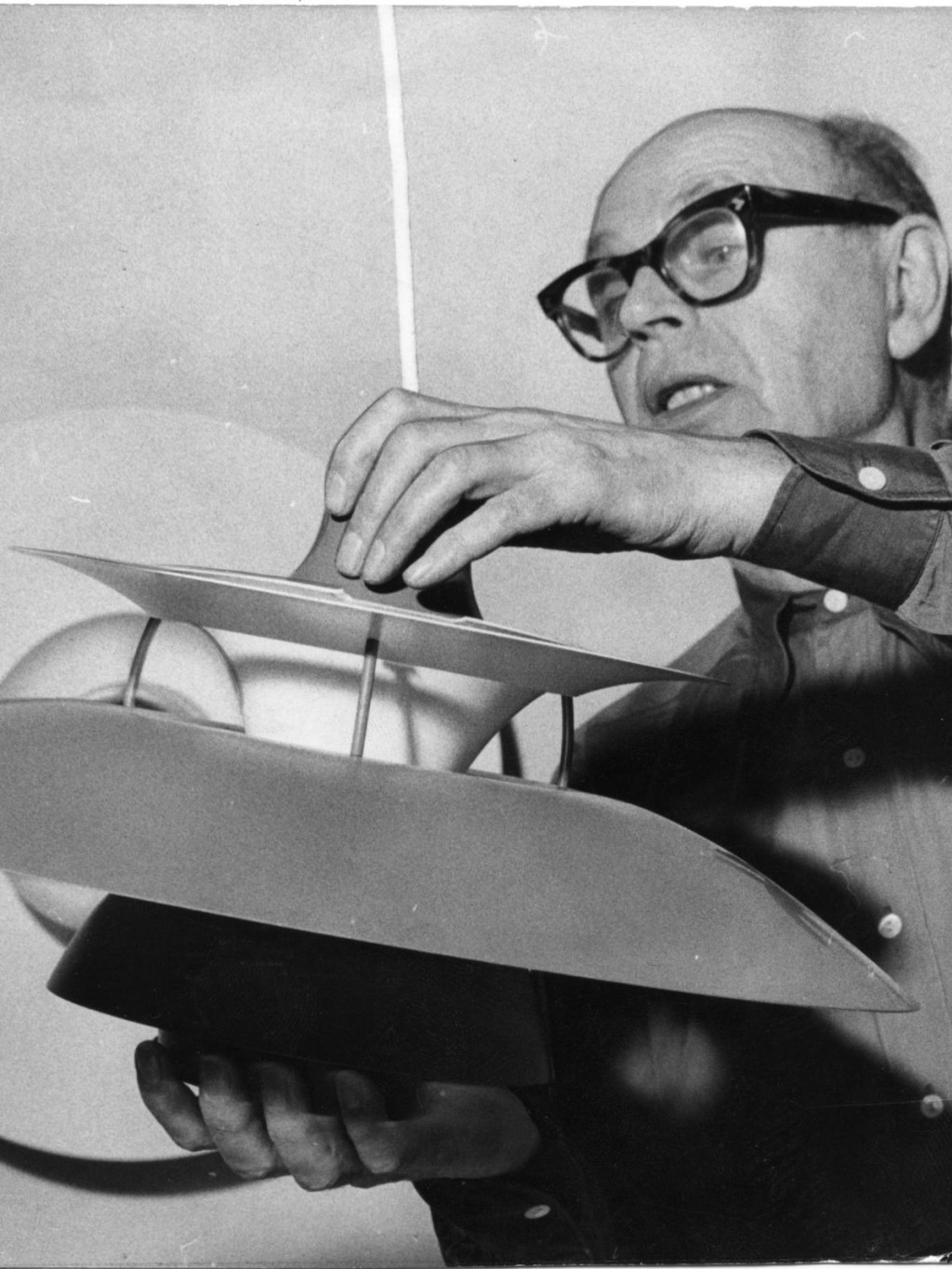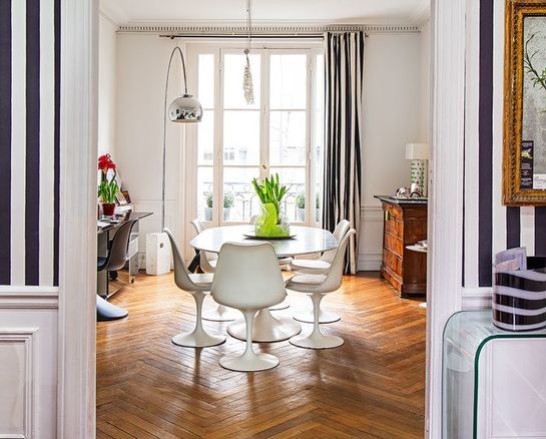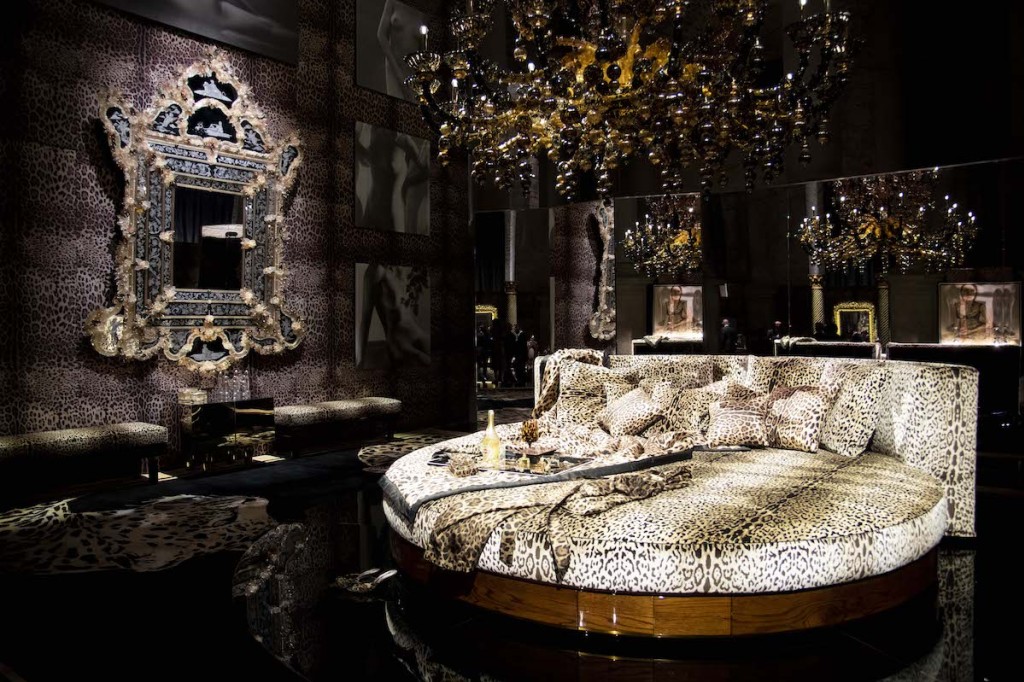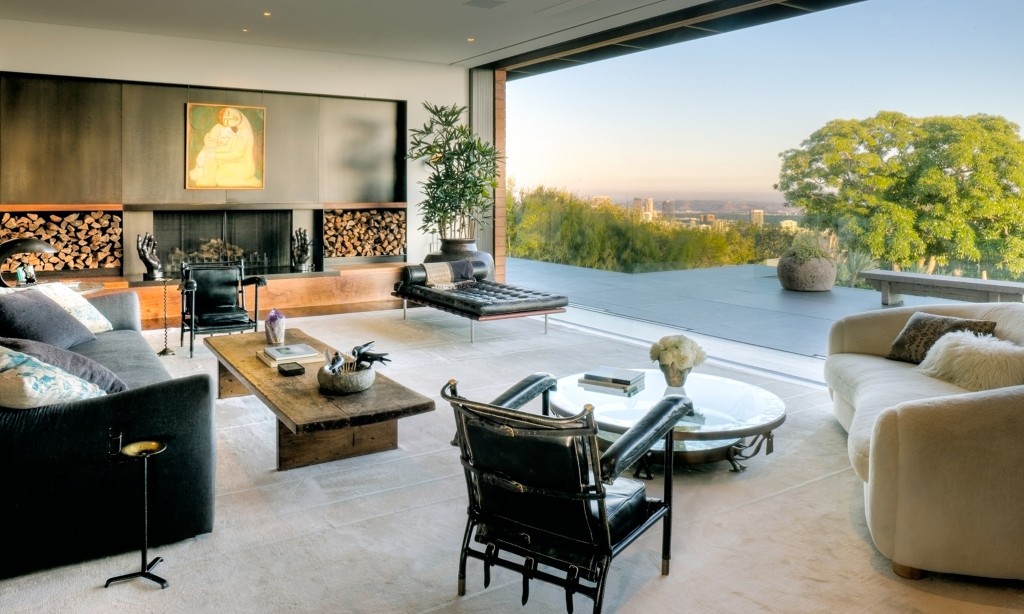The Centre Pompidou is renowned for having the 1st collection of modern and contemporary art in Europe. The history of architecture and design is very much intertwined with the evolution of modern art, disciplines intersect, artists exchange and influence each other. This is why the Musée National d'Art Moderne also has a leading design collection. In 1991, Dominique Bozo, then director of the Centre Pompidou, decided to endow the cultural institution with a first-rate heritage collection devoted to design. Today, the Centre Pompidou's design collections are among the most important in the world. They include nearly 8,000 works, representing 900 designers, and range from the beginning of the 20th century to the present day. We have chosen to present exceptional works from the Centre Pompidou's collections, representative of the evolution of ideas and concepts that have shaped the history of modern and, closer to home, contemporary design.

To make our choice, we have highlighted currents, eminent personalities, strongly represented in the Centre's collections. Let's start with the beginning of the 20th century with exceptional pieces gathered around the French artists of the U.A.M. (Union des Artistes Modernes, 1929)

It is no coincidence that the Centre Pompidou has impressive French modern holdings around the major figures of the U.A.M. In 2018, it devoted an exhibition to this movement entitled, "UAM, une aventure moderne," making a point: that of twisting the idea that it was not Art Deco that blew a wind of modernity at the beginning of the previous century, but the U.A.M.




A new generation of creators and designers was emerging at the beginning of the twentieth century to put an end to the bourgeois obsequiousness of decoration and furniture inherited from Art Nouveau and Art Deco. The first steering committee formed by Robert Mallet-Stevens included Francis Jourdain, René Herbst, Hélène Henry and Raymond Templier, as well as personalities such as Sonia Delaunay, Fernand Léger, Jean Carlu, Pierre Chareau, Jean Prouvé, Le Corbusier, Pierre Jeanneret, Charlotte Perriand or Eileen Gray.

Le Corbusier (Charles-Edouard Jeanneret, dit, 1887-1965), Charlotte Perriand, Pierre Jeanneret, Fauteuil Grand Confort, 1928. Metal structure. Removable leather cushions. Photo credits © Centre Pompidou, MNAM-CCI, Dist. RMN-Grand Palais / Bertrand Prévost

Djo-Bourgeois (Georges Bourgeois, known as, 1898 - 1937), Executive desk, 1929. Lacquered wood veneer and wood sheathed in metal plate. Carries the inventory number AM 2007-1-24. Credit photo © Georges Meguerditchian - Centre Pompidou, MNAM-CCI / Dist RMN-GP.


Jean Prouvé (1901- 1984), Fauteuil de grand repos, 1930. The structure is made of lacquered sheet steel. The upholstery is made of horsehair and the covering is made of tarpaulin. Tilting seat. Credit photo © Centre Pompidou, MNAM-CCI, Dist. RMN-Grand Palais / Jean-Claude Planchet.

Shaped table, Charlotte Perriand design, 1938. Solid pine plank top and varnished wood tripod base. Credit photo © Centre Pompidou, MNAM-CCI, Dist. RMN-Grand Palais / Georges Meguerditchian.
It was a wind of modernism that blew across Europe in this first third of the 20th century. The creators of the U.A.M. in France, but also the teachings of the famous Bauhaus School in Germany (1919-1933), and the Dutch movement De Stijl. The Centre Pompidou of course has iconic pieces from this period around (among others) Marcel Breuer, Ludwig Mies van der Rohe and Gerrit Rietveld.

Marcel Breuer (1902 - 1981), Lacquered wood table, nickel-plated steel tube, 1926. We are already far from the Art Deco era, rationalism and purity, the use of new materials such as steel marks an obvious break in the history of modern design... Credit photo © Centre Pompidou, MNAM-CCI, Dist. RMN-Grand Palais / Bertrand Prévost.

Ludwig Mies van der Rohe (1886- 1969), MR 10 Chair (1927 - 1930). Flexible cantilevered structure in chromed steel tube. Cane seat. Credit photo © Centre Pompidou, MNAM-CCI, Dist. RMN-Grand Palais / Jean-Claude Planchet.

The iconic Zigzag Armchair designed by Gerrit Rietveld (1888- 1964), from 1932 to 1933. This designer's chair models have become cult, including The Military Chair of 1923, of which the Centre Pompidou owns a vintage example, and the Red Blue Armchair. Credit photo © Centre Pompidou, MNAM-CCI, Dist. RMN-Grand Palais / Jean-Claude Planchet.
A major figure of Italian and international design marks the Centre Pompidou's post-war design collection. A very important collection has been built up around the creations of the architect and designer Ettore Sottsass (1917-2007). Why this attachment, you may ask? Because, like no other, the great Italian master produced a wide variety of objects throughout his life: ceramics, jewelry, tableware, furniture and industrial objects. But above all, he will have crossed eras imprinting, at each major societal upheaval, an exceptional creative boldness.

Cult object: the famous Valentine typewriter designed by Ettore Sottsass and Perry King for Olivetti in 1969. The Centre Pompidou dedicated an exhibition in 2003 to the collaboration between Sottsass and the Italian firm.

An atypical design object: the Altare Altar (Molto Privato) raises many questions. Design: Ettore Sottsass, 1969. Materials used: Laminate print, plywood, black rubber. Photo credit © Centre Pompidou,

Ettore Sottsass, Armchair known as Tappeto Volante, 1974. Materials: cotton canvas, wood, felt, latex foam. Credit photo © Centre Pompidou, MNAM-CCI, Dist. RMN-Grand Palais / Philippe Migeat

Spice Mill MP 0214, design Ettore Sottsass for Alessi, 1994. These pieces are part of the Twergi Collection (Separable set). Material: stained beech, varnished. Credits © Adgap, Pa
Another designer with a strong presence in the Centre Pompidou's design collections is the goldsmith-artist Serge Mouille (1922-1988), known worldwide for his lighting fixtures and floor lamps with stripped metal forms and uniformly painted black. The Centre Pompidou also has an important collection dedicated to one of the major French designers of the post-war period: Pierre Paulin (1927-2009). On the latter, the Musée National d'Art Moderne has a significant collection of drawings.

Object by Serge Mouille: Perfume displays in cut metal, for Christian Dior perfumes, 1951-1952. Design: Serge Mouille. Credit photo © Centre Pompidou, MNAM-CCI, Dist. RMN-Grand Palais / Georges Meguerditchian.

Drawing by Serge Mouille, Etudes de formes série Bic, 1952-1960. Black Bic pen on paper laminated to paper. Credits © Adgap Paris. Credit photo © Georges Meguerditchian - Centre Pompidou, MNAM-CCI, Dist. RMN-Grand Palais.

Serge Mouille, Applique en aluminium repoussé (1953-1958). Credits © Adgap Paris. Credit photo © Jean-Claude Planchet - Centre Pompidou, MNAM-CCI, Dist. RMN-Grand Palais

Seat 577 known as "Tongue", design by Pierre Paulin for Artifort, 1967. A seat typical of Pierre Paulin's "patte" with the use of latex foam upholstery and a removable polyester jersey cover. A model with unusual patterns on the cover. Credits © Pierre Paulin (for reproduction rights), © SAIF (for multimedia rights). Credit photo © Bertrand Prevost - Centre Pompidou, MNAM-CCI, Dist. RMN-Grand Palais.

Pierre Paulin, Tulip or Swan armchair, type F545, 1972. Credits © Pierre Paulin (for reproduction rights), © SAIF (for multimedia rights). Photo credit © Georges Meguerditchian - Centre Pompidou, MNAM-CCI, Dist. RMN-Grand Palais.

Drawing by Pierre Paulin, Interior Perspective of Foyer 1 on Level 3 of the Hotel Nikko, 1973. Pencil, felt pen and ink on tracing paper, pencil and felt pen on cardboard. Credits © Pierre Paulin (for reproduction rights), © SAIF (for multimedia rights). Photo credit © Georges Meguerditchian - Centre Pompidou, MNAM-CCI, Dist. RMN-Grand Palais.
Often considered the enfant terrible of French contemporary design, Philippe Starck (1949) is of course very present in the Centre Pompidou's collections. More than 300 works tell the story of his career, his style and his modernity.

Ppair of "Costes" chairs, designed by Philippe Starck for the furnishing of Café Costes (Paris), 1981. With this chair model, which he will decline as an armchair, Philippe Starck reaches notoriety. Starck designed a tripod to reduce the clutter and facilitate the movement of servers. The Centre Pompidou has an all-aluminum "Costes" chair

Dr Glob chair, design Philippe Starck, 1985-1989. Structure in varnished steel tube. Polypropylene seat. Credits © Philippe Strack. Credit photo © Jean-Claude Planchet - Centre Pompidou, MNAM-CCI, Dist. RMN-Grand Palais.

Louis XX chair, design Philippe Starck, 1992. Polypropylene and aluminum. Credits © Philippe Strack. Credit photo © Georges Meguerditchian - Centre Pompidou, MNAM-CCI, Dist. RMN-Grand Palais.

Also in the Center's collections : Bedside Gun table lamp, Philippe Starck design for publisher
At the international level, the Musée National d'Art Moderne has gathered pieces around such key contemporary designers as Ron Arad (Israel, 1951), Jasper Morrison (England, 1959), Marcel Wanders (Netherlands, 1963) and Ross Lovegrove (Wales, 1958).

Also in the Centre Pompidou's design collections: Chairs model Clover, design Ron Arad for Driade, 2007.

Atlas System Tables, design Jasper Morrisson, 1992. The British designer claims a fair, simple, functional, and consistent design. His designs can be found in the world's greatest museums, such as for the Atlas chair at the Centre Pompidou.

Carbon Balloon Chair Black, design Marcel Wanders, 2013. A stunning chair in the collections of the Centre Pompidou.

In the center's collections a magnificent piece: the Cosmic Landscape light fixture by Welsh designer Ross Lovegrove, (2009-2011). A piece published by Artemide.
It is obviously impossible to present succinctly all of the Center's design collections... The richness of the French institution's design holdings is representative of the evolution of techniques and creation in the design world. The collections certainly feature pieces of furniture, but also drawings, sketches, models, and magazine originals that reflect the creative process at work.
For design lovers, the institution has multiplied in recent years the number of retrospectives devoted to designers (Charlotte Perriand in 2005, Ettore Sottsass (2008-2009), Eileen Gray in 2013, Pierre Paulin in 2016), giving on these occasions the opportunity to discover the depth of its collections.

View of the exhibition retracing the work of Pierre Paulin at the Centre Pompidou. From left to right: Tongue chair (1967), Artifort chair (1960), Mushroom chair (1963), Little Tulip chair (1963) |Multimo chair (1975)
François Boutard

